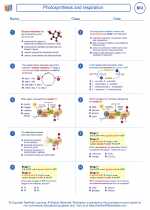Surface Area in Biology
In biology, surface area refers to the total area of the outer surface of an organism or a cell. Surface area is an important concept in biology as it impacts various biological processes such as the exchange of gases, nutrients, and waste products between an organism or a cell and its environment.
For example, in cells, a larger surface area allows for more efficient exchange of substances through processes such as diffusion and osmosis. In organisms, surface area affects the absorption of nutrients and the release of waste products. Understanding the surface area to volume ratio is crucial in understanding how organisms and cells interact with their environment.
Factors Affecting Surface Area
Several factors can affect the surface area of an organism or a cell, including its size, shape, and structure. In cells, structures such as microvilli and cell membranes contribute to the overall surface area available for interactions with the environment. In multicellular organisms, specialized structures such as gills, lungs, and villi also play a significant role in increasing surface area for efficient exchange of substances.
Calculating Surface Area
The surface area of an object or a cell can be calculated using various mathematical formulas, depending on its shape and structure. For example, the surface area of a cell can be calculated using the formula for the surface area of a sphere or a cylinder, depending on the cell's shape. Understanding these calculations is important for analyzing the functional capacity of cells and organisms.
Study Guide: Surface Area in Biology
- Definition: What is surface area in biology? How does it impact biological processes?
- Factors Affecting Surface Area: Discuss the factors that can affect the surface area of an organism or a cell.
- Calculating Surface Area: Explain the mathematical formulas used to calculate the surface area of different shapes and structures in biology.
- Importance of Surface Area: Discuss the importance of surface area in biological systems and provide examples to illustrate its significance.
- Application: Describe how an understanding of surface area is crucial in fields such as physiology, ecology, and cell biology.
Understanding surface area is essential for comprehending the functional adaptations of cells and organisms to their environments. It is a fundamental concept in biology that underpins various biological processes and interactions.
.◂Biology Worksheets and Study Guides High School. Photosynthesis and respiration

 Worksheet/Answer key
Worksheet/Answer key
 Worksheet/Answer key
Worksheet/Answer key
 Worksheet/Answer key
Worksheet/Answer key
 Vocabulary/Answer key
Vocabulary/Answer key
 Vocabulary/Answer key
Vocabulary/Answer key
